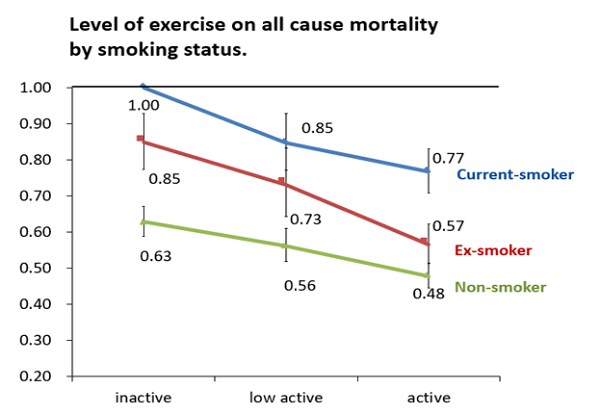Recent manuscripts
Archive
Editorial Board
Aims and Scope
Open Access
Indexing
Contact us
Authorship & COI
Principles of Transparency Checklist
Publication Ethics
Crossmark
Data Policies
Supporting Diversity
Instructions to authors (PDF)
Manuscript Types
Manuscript Formatting
How to submit
Special Publications & Reprints
Preprints
Encouraging physical activity for smokers: benefits beyond expectation
1
National Taiwan Sport University, Institute of Sport Science, Taoyuan, Taiwan, China
2
National Health Research Institutes, Institute of Population Science, Miaoli, Taiwan, China
3
Taipei Medical University, Master Program in Global Health and Development, Taipei, Taiwan, China
4
China Medical University Hospital, Taichung, Taiwan, China
5
John Tung Foundation, Taipei, Taiwan, China
Publication date: 2018-03-01
Tob. Induc. Dis. 2018;16(Suppl 1):A515
KEYWORDS
TOPICS
ABSTRACT
Background:
Guideline for smoking cessation often mentioned physical activity as a desirable behavior but has never considered it essential.
This study aims to quantity the short-term and long-term benefits of leisure-time physical activity (LTPA) among smokers, including its impact on quitting behavior and on mortality outcome.
Methods:
This cohort, consisting of 434,189 individuals (23.2% smokers and 6.1% ex-smokers), went through standard medical surveillance program(s) from 1996 to 2008. History for smoking and physical activity was collected in the initial visit and subsequent visits. Exercise volume, expressed in MET·hour/week at each visit, classified each individual into inactive (< 3.75), low-active (3.75-7.49), or fully active (≥7.50) group. Fully active individuals met the current recommendation of 30 minute/day for 5 days or more per week. Hazard ratios (HR) were calculated with Cox model for mortality, adjusted for 10 confounders. Life expectancy was calculated using life table method.
Results:
One fifth of smokers (22.9%) and one third of former smokers (37.4%) were active, an under-appreciated phenomenon favoring exercisers for success in cessation. Smokers who were fully active increased quit rate by 55%-81%. Furthermore, active smokers had up to 30% less relapse rate when compared to less active individuals. Smokers who remained physically active had significant reduction in mortality for all-cause, all-cancers and cardiovascular diseases, by 23%, 14% and 34%, respectively. Moreover, they gained 3.7 years in life expectancy. Smokers who quit and stayed active reduced mortality by 43% and gained 5.6 years in life expectancy.

[Level of exercise on allcause mortality by smoking]
Conclusions:
To engage in physical activity has unexpected benefits for smokers. It improved the success rate for smoking cessation, reduced relapse rates and extended life expectancy. Physical activity should be included as an essential aspect in the current guideline for smoking cessation.
Guideline for smoking cessation often mentioned physical activity as a desirable behavior but has never considered it essential.
This study aims to quantity the short-term and long-term benefits of leisure-time physical activity (LTPA) among smokers, including its impact on quitting behavior and on mortality outcome.
Methods:
This cohort, consisting of 434,189 individuals (23.2% smokers and 6.1% ex-smokers), went through standard medical surveillance program(s) from 1996 to 2008. History for smoking and physical activity was collected in the initial visit and subsequent visits. Exercise volume, expressed in MET·hour/week at each visit, classified each individual into inactive (< 3.75), low-active (3.75-7.49), or fully active (≥7.50) group. Fully active individuals met the current recommendation of 30 minute/day for 5 days or more per week. Hazard ratios (HR) were calculated with Cox model for mortality, adjusted for 10 confounders. Life expectancy was calculated using life table method.
Results:
One fifth of smokers (22.9%) and one third of former smokers (37.4%) were active, an under-appreciated phenomenon favoring exercisers for success in cessation. Smokers who were fully active increased quit rate by 55%-81%. Furthermore, active smokers had up to 30% less relapse rate when compared to less active individuals. Smokers who remained physically active had significant reduction in mortality for all-cause, all-cancers and cardiovascular diseases, by 23%, 14% and 34%, respectively. Moreover, they gained 3.7 years in life expectancy. Smokers who quit and stayed active reduced mortality by 43% and gained 5.6 years in life expectancy.

[Level of exercise on allcause mortality by smoking]
Conclusions:
To engage in physical activity has unexpected benefits for smokers. It improved the success rate for smoking cessation, reduced relapse rates and extended life expectancy. Physical activity should be included as an essential aspect in the current guideline for smoking cessation.
Share
RELATED ARTICLE
We process personal data collected when visiting the website. The function of obtaining information about users and their behavior is carried out by voluntarily entered information in forms and saving cookies in end devices. Data, including cookies, are used to provide services, improve the user experience and to analyze the traffic in accordance with the Privacy policy. Data are also collected and processed by Google Analytics tool (more).
You can change cookies settings in your browser. Restricted use of cookies in the browser configuration may affect some functionalities of the website.
You can change cookies settings in your browser. Restricted use of cookies in the browser configuration may affect some functionalities of the website.

